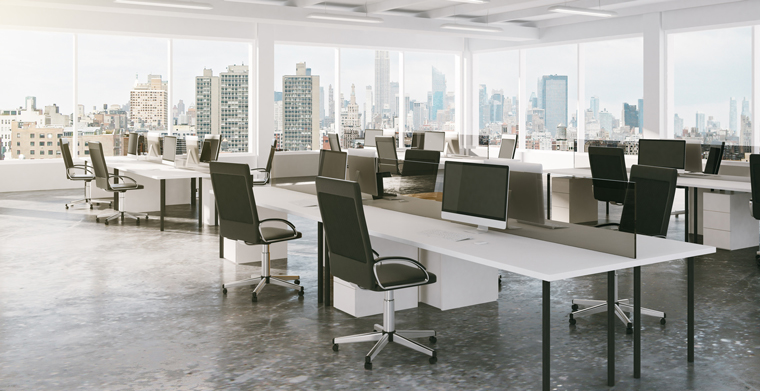Hotdesking might not be ‘dead’ after all
- Written by Tess Sanders Lazarus

According to Christian Pistauer, Workplace Strategy director of Meta5 Group in Australia, COVID will dramatically change the commercial real estate sector in Australia for many years to come.
”Business will be reducing their physical footprint and investing in technology solutions to build and maintain culture and enable flexible working practices,” Pistauer said.
The proclaimed ‘death’ of hotdesking or activity-based-working might be premature. Economic pressure, demand for flexibility and digitisation will push things into a different direction. The introduction of activity-based-working combined with work from home policies can reduce real estate requirements by up to 30-50 percent.
Pistauer believes COVID has shown us that we can work from home and we are productive at home. “There will be a shift in the way employees see their workspaces. As many have come to realise, the office does provide a valuable space for collaboration as well as intangibles such as socialising and bond-building. The office will become a hub – a place that employees choose to go to fulfil a certain type of work.”
In real terms: an office with 100 employees has on average 1,200sqm rentable office space; this may reduce to 600-700sqm in the coming years, saving significant costs.
“While the pandemic and the speed of the change have undoubtedly caused a lot of stress and forced difficult decisions, not all the mid to long-term changes are negative,” Pistauer added.
“For most businesses the coming year will not be a process of simply returning to how things were, but will involve selecting the positive aspects of what has been learned in the enforced shift to flexible working.
“The key issue is ‘what this new world of work will look like’ and how can organisations ensure they make the transition successfully.”
Flexible Working will be the future
“We are going to see increased flexibility in the workplace, but not as we have known. It will be smarter and better managed. There will be essentially four layers of flexibility,” Pistauer said.
Flexibility in Place
The idea that an employee must be in a certain location to carry out their role has been shown as out-dated in many industries. Employers will need to implement modern work from home policies and activity based working in their new models of working.
Flexibility in Role
Cost pressures may well force companies into difficult decisions around personnel, as staff costs make up an average of 80 percent of a business’ outgoings.
Being more flexible with the way roles are allocated will be one way to manage this. Job sharing, part time working and employing contractors are likely to become more common in the coming years.
Flexibility in Time
Flexible working models need to include a number of ways for employees to structure their time. This could include a compressed working week, staggered start and finish times, and more flexible hours policies, all of which will help reduce the cost of real estate.
Flexibility in Leave
A good flexible working policy will also make provisions for allowing more unpaid leave to be taken, and will be more lenient with regards holiday transfer and time in lieu.
Increased investment in technology
“There will be a significant push for businesses in almost all industries to move from paper-based storage to cloud-based facilities, thus allowing for location-flexibility. In the office itself, technology will become even more pronounced,” Pistauer added.
“Dedicated video conferencing rooms will be a necessity, as will personalised equipment. IT may well be the one area where spending will increase over the coming years, though this will be seen as an investment.”
Pistauer is of the view that some organisations will manage the transition better than others.
“We have been measuring the success of workplace transformations since 2012. In our experience there is a significant difference in how successfully organisations adapt to the transition to a more modern way of working,” Pistauer said.
“Some take to it instantly, increasing productivity and reducing costs, all the while reporting increased employee satisfaction. Others struggle with the change, and experience the opposite results.
“What makes the difference? From our research we know that there are four key factors to success: get the basics right and ensure processes are smooth, develop a clear flexible working framework, provide a structured change management process with ongoing support; and make sure leadership is engaged in the process and crucially, walks the talk. One of the largest areas of frustration for employees is being moved to a hot desk environment while seeing the manager retain their own office.
“The success of the new look office will depend on the ability of a business to straddle and manage the balance between the old way of working vs the new.”
Meta5 is a tenant advisory and workplace strategy consultancy working across Australia and New Zealand. Meta5 specialises in workplace strategy, and help businesses of all sizes across Australasia and beyond adapt to a more modern way of working.
www.meta5group.com






